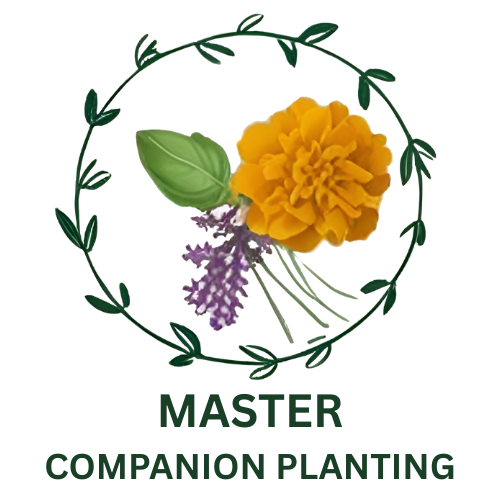
Step 1: Grasp Companion Planting
Companion planting is an age-old gardening practice that involves cultivating different plants together to benefit each other in various reciprocal ways. For instance, some plants naturally deter specific pests, others are known to enrich the soil with essential nutrients, and some can offer shade or act as structural supports for climbing plants. Understanding and leveraging these relationships can lead to a more fruitful and resilient garden. Key principles of companion planting include:
-
Mutual Benefit: Pairing plants that support each other’s growth ensures they thrive. For example, some plants can enhance flavors or boost each other’s growth rates through their natural chemistry.
-
Avoid Incompatible Neighbors: While some plants thrive when grown close to each other, others can inhibit their neighbors’ development due to competition for nutrients or by releasing growth-inhibiting chemicals. Identifying and avoiding these combinations is crucial for maintaining a thriving garden ecosystem.
-
Natural Pest Control: Select plants that naturally repel harmful insects. This can significantly reduce the need for chemical pesticides, creating a healthier growing environment.
Step 2: Plan Your Garden Layout
Planning a garden layout is an important step that requires an understanding of the physical space and environmental conditions of your garden:
-
Sketch Your Garden: Create a rough outline of your garden space. Consider including rows, raised beds, or various containers where relevant. A well-thought-out garden sketch will assist you in visualizing where each plant will be positioned.
-
Identify Sunlight Zones: Sunlight is a critical factor for plant growth. Designate areas with full sun, partial shade, or full shade based on the daily sunlight they receive. This will help you choose suitable plants for each zone.
-
Group Plants by Needs: Arrange plants based on water, sunlight, and soil requirements. Grouping plants with similar needs ensures that each plant receives optimal care and resources, reducing maintenance efforts and improving growth outcomes.
Step 3: Implement Companion Planting Combinations
Explore and implement these classic companion planting pairings, each known for their unique benefits:
Vegetables
-
Tomatoes + Basil + Marigolds:
-
Basil is renowned for enhancing the flavor of tomatoes and effectively warding off pests such as aphids and whiteflies, making it an essential companion for tomatoes.
-
Marigolds are celebrated for their pest-repelling properties, deterring nematodes and other detrimental insects. They also add a splash of color to your garden.
-
-
Carrots + Onions:
-
Onions produce a strong scent that repels carrot flies, a significant pest for carrots, while the deep roots of carrots help aerate the soil for onions.
-
-
Corn + Beans + Squash (Three Sisters):
-
Corn provides robust structural support for climbing beans, creating a natural trellis.
-
Beans contribute to soil health by fixing nitrogen, a crucial nutrient, benefiting both corn and squash.
-
Squash acts as a ground cover, helping to retain soil moisture and suppress weed growth with its broad leaves.
-
Herbs
-
Dill + Cabbage:
-
Dill attracts beneficial insects such as ladybugs and parasitic wasps, which target cabbage pests like aphids and cabbage loopers, thus protecting cabbage plants.
-
-
Chives + Roses:
-
Chives repel aphids, a common pest for roses, and enhance the overall health of rose plants. Also, their attractive flowers can add aesthetic value to your garden.
-
Flowers
-
Nasturtiums + Cucumbers:
-
Nasturtiums effectively lure aphids away from cucumbers, acting as a decoy and keeping these pests from harming the actual crop.
-
-
Zinnias + Peppers:
-
Zinnias draw pollinators like bees and butterflies, thereby boosting the yields of pepper plants through better pollination rates.
-
Step 4: Rotate to Prevent Pests
Consistently planting the same crops in the same soil year after year can lead to pest and disease accumulation. To prevent this, integrate crop rotation into your gardening routine. By rotating crops, you disrupt pest cycles and reduce the risk of soil-borne diseases, fundamentally maintaining a healthy and balanced garden ecosystem.
Step 5: Ensure Proper Plant Spacing
Overcrowded plants can lead to poor air circulation, which in turn promotes disease and stunted growth due to resource competition. To promote optimal growth and ensure each plant has the space, air, and nutrients it needs to thrive, always adhere to spacing guidelines specific to each plant species.
Sample Garden Layout for Beginners
For those new to companion planting, here’s a straightforward layout suggestion for a 4×4 raised bed garden that incorporates some of the pairings discussed:
(Tip: Visual aids, such as diagrams of sample garden layouts, can be incredibly beneficial for beginners embarking on garden planning.)
Step 6: Incorporate Mulch and Pathways
-
Apply mulch around your plants. This helps retain essential soil moisture, suppress unwanted weeds, and regulate soil temperature—all critical factors for healthy plant growth.
-
Establish pathways through your garden to facilitate access. These paths reduce the risk of trampling plants and help with regular garden maintenance and harvesting activities.
Step 7: Observe and Adapt
Gardening is an ever-evolving practice that benefits from continual observation and adaptation. Regularly monitor your garden to assess plant relationships and interactions, noting any issues or successes. Use these observations to adjust your layout and plant selections in future seasons. This ongoing process of learning and adapting will lead to a more productive and visually appealing companion planting garden.
By carefully following these detailed steps, you will cultivate a vibrant and productive companion planting garden and contribute positively to the ecology by making your practice more sustainable and eco-friendly. As you gain experience, you will develop your own strategies that work best in your unique garden environment.
